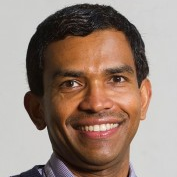Geothermal Energy: Utilization and Technology 2018
A special issue of Energies (ISSN 1996-1073).
Deadline for manuscript submissions: closed (31 August 2018) | Viewed by 81633
Special Issue Editors
Interests: geomechanics; CO2 sequestration; shale gas; coal seam gas; geotherml energy
Special Issues, Collections and Topics in MDPI journals
Interests: crack evolution behavior and mechanism of rock containing pre-existing fissures; strength, deformation, seepage and damage failure behavior of deep rock; rock time-dependent experimental and model mechanics under complex stress state; CO2 geological sequestration under saline environment; large deformation and control mechanism of deep tunnels or roadways; high temperature behavior and permeability evolution of rocks related to geothermal energy and ncluear waste disposion project
Special Issues, Collections and Topics in MDPI journals
Special Issue Information
Dear Colleagues,
Geothermal energy is a very attractive form of renewable energy. In comparison to fossil fuel, it is more environmentally friendly because of less CO2 emission and less damage to the environment. Geothermal energy has traditionally utilised hot aquifers with significant permeability to allow liberal flow of heated waters. In recent years, attention has turned to exploitation of dry (hot) rocks for geothermal energy by circulation of fluids through a ‘closed’ fracture network produced by hydraulic stimulation of the hot rock. However, commercial exploitation of this renewable resource is currently met with limited success either due to loss circulation of the injected fluid and/or inefficient extraction of heat from the rock mass. This proposal calls for papers in the areas of new sciences developed to enhance the recovery process of heat from deep geothermal reservoirs as well its utilisations.
We will, therefore, especially welcome submissions on the following topics:
- Conventional shallow geothermal systems
- Deep Hydrothermal systems
- Hot dry rocks
- Heat pumps
- Constitutive modelling and numerical methods
- Challenges in deep drilling in hot rocks
- Reservoir geomechanics, and wellbore and drilling mechanics
- Use of new circulations fluids such as Carbon dioxide
- Numerical modelling of coupled thermal-mechanical-fluid flow systems
- Techniques to enhance heat recoveries, such as new fracking and innovations in well drilling
- Associated environmental issues
- Coupled thermo-hydro-chemical-mechanical processes
- Experimental works on soil and rocks at medium to high temperatue
- Case studies of international interest
Prof. Dr. Sheng-Qi Yang
Guest Editors
Manuscript Submission Information
Manuscripts should be submitted online at www.mdpi.com by registering and logging in to this website. Once you are registered, click here to go to the submission form. Manuscripts can be submitted until the deadline. All submissions that pass pre-check are peer-reviewed. Accepted papers will be published continuously in the journal (as soon as accepted) and will be listed together on the special issue website. Research articles, review articles as well as short communications are invited. For planned papers, a title and short abstract (about 100 words) can be sent to the Editorial Office for announcement on this website.
Submitted manuscripts should not have been published previously, nor be under consideration for publication elsewhere (except conference proceedings papers). All manuscripts are thoroughly refereed through a single-blind peer-review process. A guide for authors and other relevant information for submission of manuscripts is available on the Instructions for Authors page. Energies is an international peer-reviewed open access semimonthly journal published by MDPI.
Please visit the Instructions for Authors page before submitting a manuscript. The Article Processing Charge (APC) for publication in this open access journal is 2600 CHF (Swiss Francs). Submitted papers should be well formatted and use good English. Authors may use MDPI's English editing service prior to publication or during author revisions.
Keywords
- hot dry rocks
- shallow geothermal
- conventional geothermal
- deep geothermal
- renewable energy






